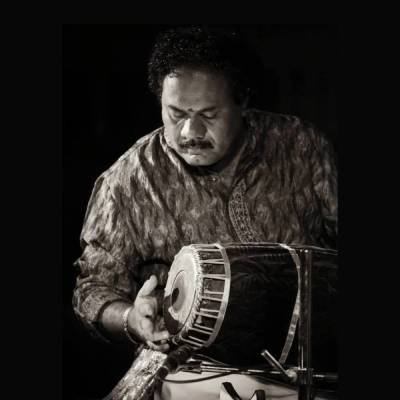What Is Baroque Music?
The Baroque era (circa 1600–1750) was a transformative period in Western music. During this time, composers began to emphasise drama, ornamentation, and expressive harmony. Baroque music is “a style…from about 1600 to about 1750, known for its grandiose, dramatic, and energetic spirit”. It coincided with the rise of opulent art and architecture – think of elaborate palaces and paintings – where contrast and detail were prized. In music, this translated into new forms and techniques that departed from the Renaissance’s balanced polyphony.
Key developments around 1600 included the birth of opera (theatrical singing with instruments) in Italy and the new emphasis on solo voice and bass line (stile moderno)The older Renaissance “stile antico” continued mainly in church music, while secular music blossomed with bold melodies and harmonies. Baroque music also saw the creation of many forms still used today: new vocal genres like opera, oratorio, and cantata, and instrumental genres like the sonata, concerto, and overture. These genres were designed to showcase contrast and emotion – for example, the concerto placed a solo instrument against an orchestra, and the suite collected dance-style movements into a single work.
- New forms: Opera, oratorio, and cantata for voice; sonata, concerto, and suite for instruments
- Emotional style: Baroque composers deliberately used contrast and ornament to create drama and surprise, mirroring Baroque art’s exuberant detail.
In summary, Baroque music emerged as a highly expressive style shaped by historical forces (court patronage, church influence, and evolving public taste). It set the foundation for later Classical music, and its repertoire remains central to any pianist’s education. Many adapt inspirations and pieces from Baroque era to teach as part of online piano lessons to expose the students to this era of music.
Key Characteristics and Features of Baroque Music
Baroque music is distinguished by several features that learners should recognize:
- Basso Continuo (Thoroughbass): A hallmark of Baroque harmony. A keyboard instrument (harpsichord or organ) plus a bass instrument (cello, bassoon, etc.) played a written bass line, while the keyboard player improvised chords and ornaments above it.This provided a rich harmonic foundation and rhythmic drive to most pieces.
- Ornamentation & Improvisation: Composers expected performers to embellish melodies. Trills, mordents, appoggiaturas, turns and other ornaments were not optional flair – they were integral expressiveness.In fact, Baroque scores often have few explicit symbols because musicians would improvise ornaments by ear on repeats or cadences.
- Terraced Dynamics: Instead of gradual crescendos, Baroque music often shifts abruptly from loud to soft and vice versa, a technique called terraced dynamics. These sharp dynamic contrasts heighten the drama between sections (e.g. alternating tutti and solo passages in a concerto) and reflect the Baroque taste for clear, striking effects.
- Polyphony and Counterpoint: Many Baroque compositions feature complex counterpoint – multiple independent melodic lines sounding together. Johann Sebastian Bach is the supreme master of this style. As one historian notes, Bach’s “mastery of harmony, counterpoint, and form” shaped the course of classical music. His fugues and inventions demonstrate how Baroque music balances intricate voices in a unified texture.
- Expressive “Affects”: Baroque composers aimed to evoke specific emotions or affections in the listener. Through rhetorical devices like repetition, dance rhythms, and ornamented cadences, they painted musical “scenes.” Performers learned to convey these affects through timing, phrasing, and sometimes extensive improvisation.
Other traits include the use of specific dance rhythms (e.g. in Bach’s suites) and national flavours (French Baroque uses different ornament signs than Italian Baroque). But the above features – especially ornamentation and basso continuo – are what give Baroque music its distinctive lively, ornate character.
Major Composers and Their Influence
Other traits include the use of specific dance rhythms (e.g. in Bach’s suites) and national flavours (French Baroque uses different ornament signs than Italian Baroque). But the above features – especially ornamentation and basso continuo – are what give Baroque music its distinctive lively, ornate character.
- Johann Sebastian Bach (1685–1750) – Often called the “king of counterpoint,” Bach was a German composer and keyboard virtuoso. His extensive keyboard output (Preludes & Fugues in The Well-Tempered Clavier, Two-Part Inventions, English Suites, Partitas, etc.) is fundamental to every pianist’s training. Bach’s music is celebrated for “technical brilliance, emotional depth, and enduring beauty,” and it became a cornerstone of the classical repertoire. Studying Bach develops finger independence, understanding of harmony, and interpretive skill.
- George Frideric Handel (1685–1759) – A German-born composer who spent much of his career in England, Handel excelled in vocal music (his oratorio Messiah is famous) but was also a brilliant keyboardist from childhood. He published two sets of eight harpsichord suites (1720 and 1733) that exploit Baroque dance forms (allemande, courante, sarabande, gigue, etc.). These suites (and single pieces like the “Harmonious Blacksmith” from his E- major Suite) are standard teaching pieces. Handel’s clear melodies and grand gestures have influenced classical opera and orchestral writing as well.
- Domenico Scarlatti (1685–1757) – An Italian composer famed for his 555 keyboard sonatas. . Most are single-movement works in binary form (A–B), written for harpsichord or the early fortepiano. . Scarlatti’s sonatas are often virtuoso and colorful, reflecting Spanish folk influences (he lived in the Spanish court). Later composers admired him: Mozart copied some sonatas by hand, and Liszt and Bartók drew on Scarlatti’s inventive textures. Many pianists study Scarlatti’s sonatas to build agility and to appreciate early keyboard style.
- Antonio Vivaldi (1678–1741) – An Italian priest and violin virtuoso, Vivaldi is best known for his violin concertos (especially The Four Seasons). He played a key role in developing the solo concerto form, which in turn influenced keyboard concerto writing (later seen in Mozart and Beethoven). Vivaldi’s style was so admired that Johann Sebastian Bach transcribed several of his violin concertos for keyboard (harpsichord/organ), including the famous Concerto in A minor (RV 522). Thus Vivaldi’s harmonies and rhythms indirectly shaped Baroque keyboard technique.
These composers and their works have a lasting impact: they established techniques and musical ideas (like counterpoint and ornamented melody) that are still taught today. In modern online piano lessons, for instance, students routinely learn Bach’s Inventions or Scarlatti’s sonatas to develop finger control and stylistic understanding.
Role of the Piano in Baroque Music
Classical piano students often wonder how Baroque music fits with a modern instrument.
In the Baroque era, the harpsichord (and organ or clavichord) was the standard keyboard, not our modern piano.
During the Baroque era, keyboard parts were typically played on ornate harpsichords and related instruments. The harpsichord’s plucked strings and bright sound were perfect for the intricate ornamentation and continuo accompaniment of the time. (Its lid was often painted with elaborate scenes, as shown above.) As Britannica notes, the harpsichord “was widely used in…Baroque music” and formed the backbone of the continuo group.
The piano (originally called pianoforte) was invented around 1700 by Bartolomeo Cristofori, at the very end of the Baroque period. Its hammer action allowed players to vary the volume by touch (soft/loud), unlike the harpsichord, which plucks strings at a fixed volume.
In modern piano pedagogy, Baroque pieces are typically played on the modern piano. Online piano lessons today address this by teaching historically-informed techniques on the piano. For example, instructors stress light, detached articulation and careful pedaling so that Baroque music retains its clarity and rhythmic vitality on a piano. They may demonstrate how to mimic the harpsichord’s crisp sound (no rolling chords, minimal sustain) and how to shape phrases without the same kind of crescendos composers did notate in later eras. In short, while the instrument differs, the spirit of Baroque music lives on: by using finger legato and precise timing, pianists can “speak” the Baroque style on the modern piano. Many online piano lessons include video examples of Baroque repertoire, guiding students on how to adapt ornamentation and touch to today’s instrument.
Step-by-Step Guide to Learning Baroque Ornamentations on Piano
A key element of Baroque style is ornamentation – the trills, mordents, grace notes and turns that decorate the melody. In Baroque practice, performers often improvised these embellishments to add life to repeated passages. As one guide notes, a singer might sing a da capo aria plain on the first pass and then “decorate it with additional flourishes and trills” on the repeat. The same was true for keyboard players: they were expected to add trills, mordents (upper or lower), appoggiaturas and other ornaments to bring out the emotion.
Understanding and practicing these ornaments is essential for playing Baroque music authentically. Below is a breakdown of the main ornaments and how to learn them on the piano:
- Trill (Tr): A trill is a rapid alternation between a written note and the note above it. In notation, it may be shown as “tr” or a wavy line above the note. To play a trill on piano, quickly alternate between the principal note and its upper neighbor (using two fingers, e.g. index and middle) in a smooth, controlled motion. Start very slowly (even two notes per click on a metronome), and gradually increase speed until the alternation sounds even and continuous. Pay attention to where the trill should begin and end (in Baroque style it usually starts on the upper note). Practice trills on different fingers and scales so both hands are flexible. For example, you might play a slow two-note trill on G–A (if G is the main note) and repeat until you can do it cleanly at performance tempo. Trills appear often in Bach’s keyboard pieces and Handel’s suites – listen to recordings to feel their length and placement.
- Mordent: The mordent is similar to a short trill but involves the lower neighbor (unless marked differently). A lower mordent means: play the written note, then the note immediately below it, then return to the written note. (An upper mordent would use the note above, but in Baroque music the symbol without a slash usually implies the lower mordent) The symbol looks like a squiggly line (similar to trill) but often with a short vertical line through it. To practice, play a quick three-note figure: main note – lower neighbor – main note, evenly and sharply. Try it slowly first (e.g. D–C–D if D is the main note), then speed up. Keep the main note held while touching the neighbor as lightly as possible. Mordents often occur on strong beats; for example, Bach’s inventions include mordents at cadences or ends of phrases. Work them out on scales or repeated single notes before inserting them into a piece.
- Appoggiatura: The appoggiatura is an accented grace note that “leans” on the main note. It’s written as a small note (often without a slash) before the principal note and takes up some of its time (traditionally about half). In other words, you play the appoggiatura (one step above or below the main note) on the beat, then resolve immediately to the main note, taking up part of its value. For example, if a quarter note G has a small A before it, you would play A and G almost together, with A getting a strong accent. On piano, strike the appoggiatura note briefly and then land cleanly on the main note. Practice by holding a steady pulse and inserting the long appoggiatura in time: e.g. play ♪A–G (where G is held for the rest of the beat). In Baroque keyboard music, appoggiaturas often ornament cadences and emotional peaks.
- Turn: The turn (or “inverted turn”) is a four-note figure: note above, main note, note below, main note again. It looks like a sideways “S” above the note. To play a turn, quickly alternate through those four notes in sequence. For example, if the main note is D, play E– D–C–D (one above, the main, one below, the main). The speed and exact rhythm can vary by context. Some turns are “inverted” (note below first) if marked with a vertical stroke. Practice turns slowly at first, making sure each of the four notes is distinct and evenly timed. Then apply it on the beat or half-beat as indicated. Turn symbols often appear on repeated sections (Bach uses them in the Allemande of French Suite No.5, for example).
- Trill (Tr): A trill is a rapid alternation between a written note and the note above it. In notation, it may be shown as “tr” or a wavy line above the note. To play a trill on piano, quickly alternate between the principal note and its upper neighbor (using two fingers, e.g. index and middle) in a smooth, controlled motion. Start very slowly (even two notes per click on a metronome), and gradually increase speed until the alternation sounds even and continuous. Pay attention to where the trill should begin and end (in Baroque style it usually starts on the upper note). Practice trills on different fingers and scales so both hands are flexible. For example, you might play a slow two-note trill on G–A (if G is the main note) and repeat until you can do it cleanly at performance tempo. Trills appear often in Bach’s keyboard pieces and Handel’s suites – listen to recordings to feel their length and placement.
Step-by-Step Practice Tips:
- Learn the symbols: First identify what each ornament sign means in your sheet music. (For example, a slashed line is a lower mordent, “tr” is trill, a small black note without a slash is an appoggiatura.) Write reminders in the score if needed.
- Isolate and slow-practice: Practice each ornament on a single note or pair of notes very slowly. Use a metronome. Make the motion even and controlled before speeding up. For trills and mordents, alternate between the two notes with loose wrists; for appoggiaturas/ turns, play each auxiliary note cleanly.
- Use exercises: Integrate ornaments into scales or arpeggios. For example, play a scale and add a trill or mordent on every other note. Or take an exercise handout that has patterns of trills and repeated notes. This builds finger strength and independence.
- Start in simple pieces: Apply ornaments to easy Baroque tunes. For instance, you might take Bach’s Invention No. 1 in C major or a simple Handel keyboard minuet and add the trill or mordent marked. Focus on one ornament at a time. Slowly practice the passage, then gradually return to normal tempo.
- Use online resources: Many online piano lessons and tutorials provide demonstrations of Baroque ornaments. Watch videos to see hand movements, and use slowed-down playback if needed. Some lesson platforms let you loop troublesome measures to perfect an ornament. Take advantage of these tools to compare your execution to examples.
- Listen and internalize: Listen to professional recordings of Baroque keyboard music to hear how ornaments are executed. Following along with the score can help. With time, you’ll get a feel for how a trill or mordent fits musically.
By following these steps, even beginner pianists can start to add authentic Baroque embellishments to their playing. Remember that Baroque style is as much about creativity as it is about precision— over time you’ll gain confidence in shaping each ornament musically. Stay patient and practice regularly, and you’ll bring Baroque pieces to life with graceful trills, mordents, and turns. This enriching skill set will deepen your understanding of the repertoire and enhance all of your piano studies.
Conclusion:
In conclusion, mastering Baroque ornamentation is not only a technical achievement but also a doorway into the expressive heart of Baroque music. These delicate embellishments—trills, mordents, appoggiaturas, and turns—are more than decorative flourishes; they are essential tools for conveying the emotional richness and stylistic nuance of the era. By studying their forms, practicing them methodically, and listening to historically informed performances, pianists can breathe life into centuries-old compositions with authenticity and artistry. Whether you’re learning online or in person, embracing ornamentation transforms your playing from merely accurate to truly expressive, connecting you to the spirited elegance that defines Baroque music.


















